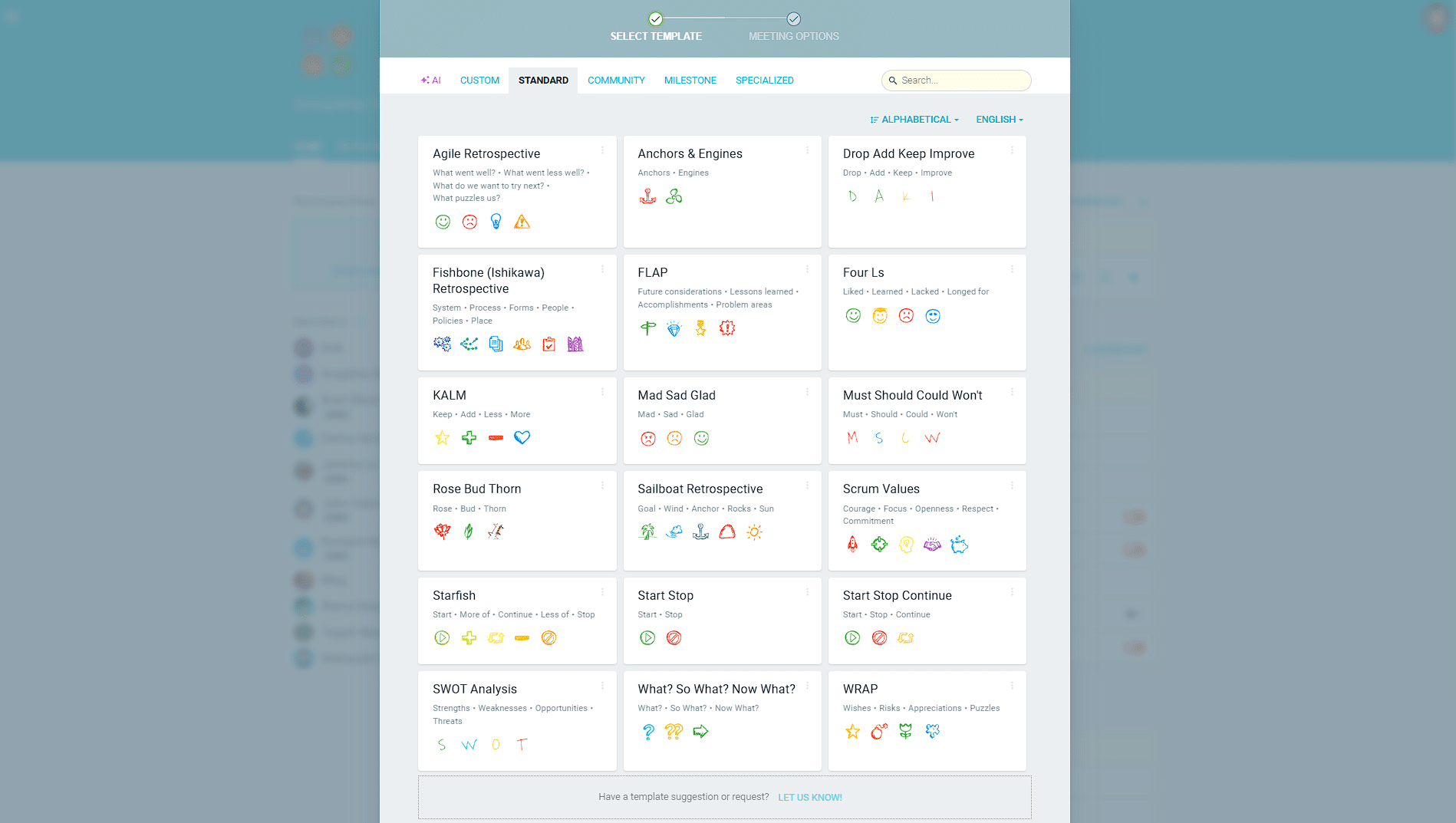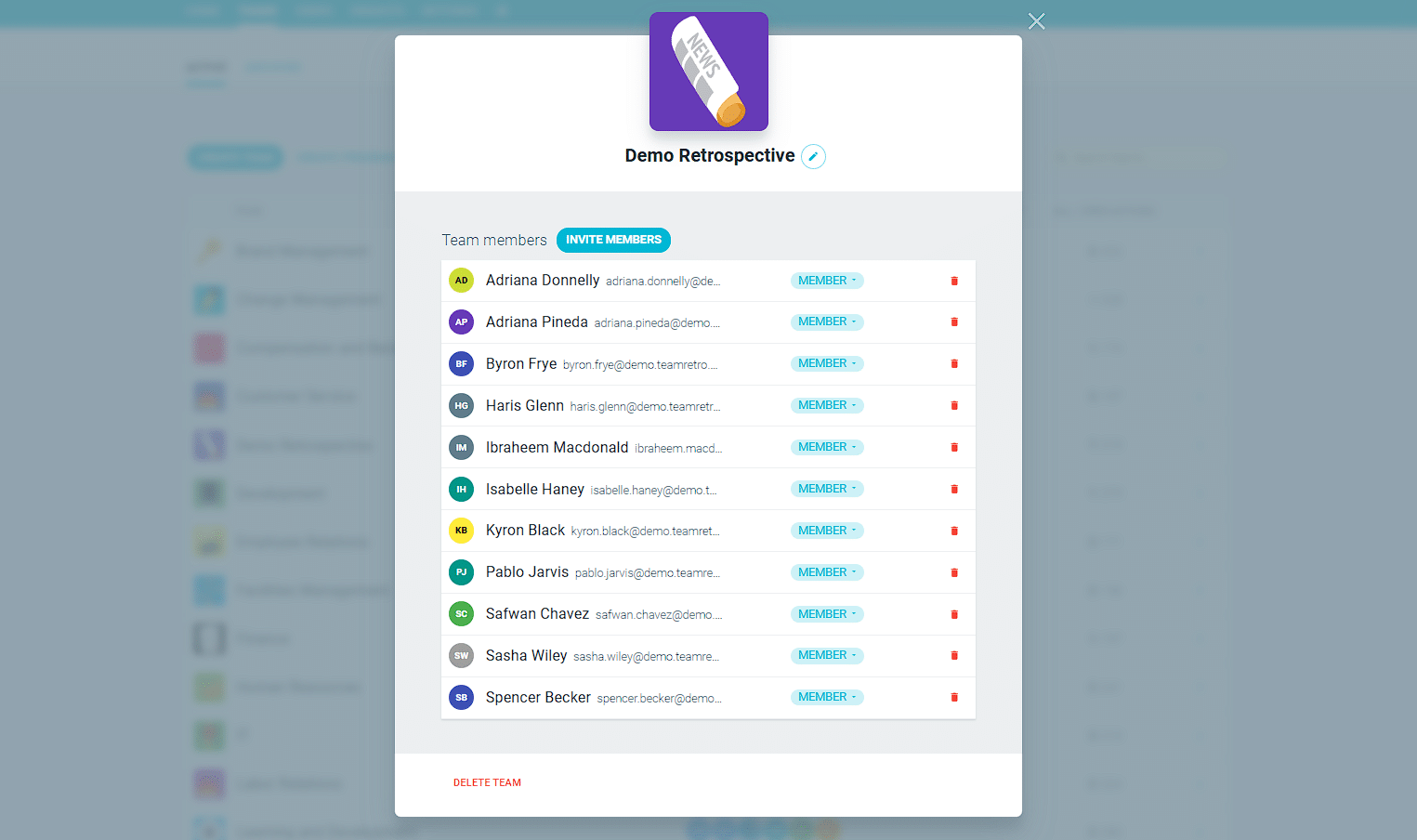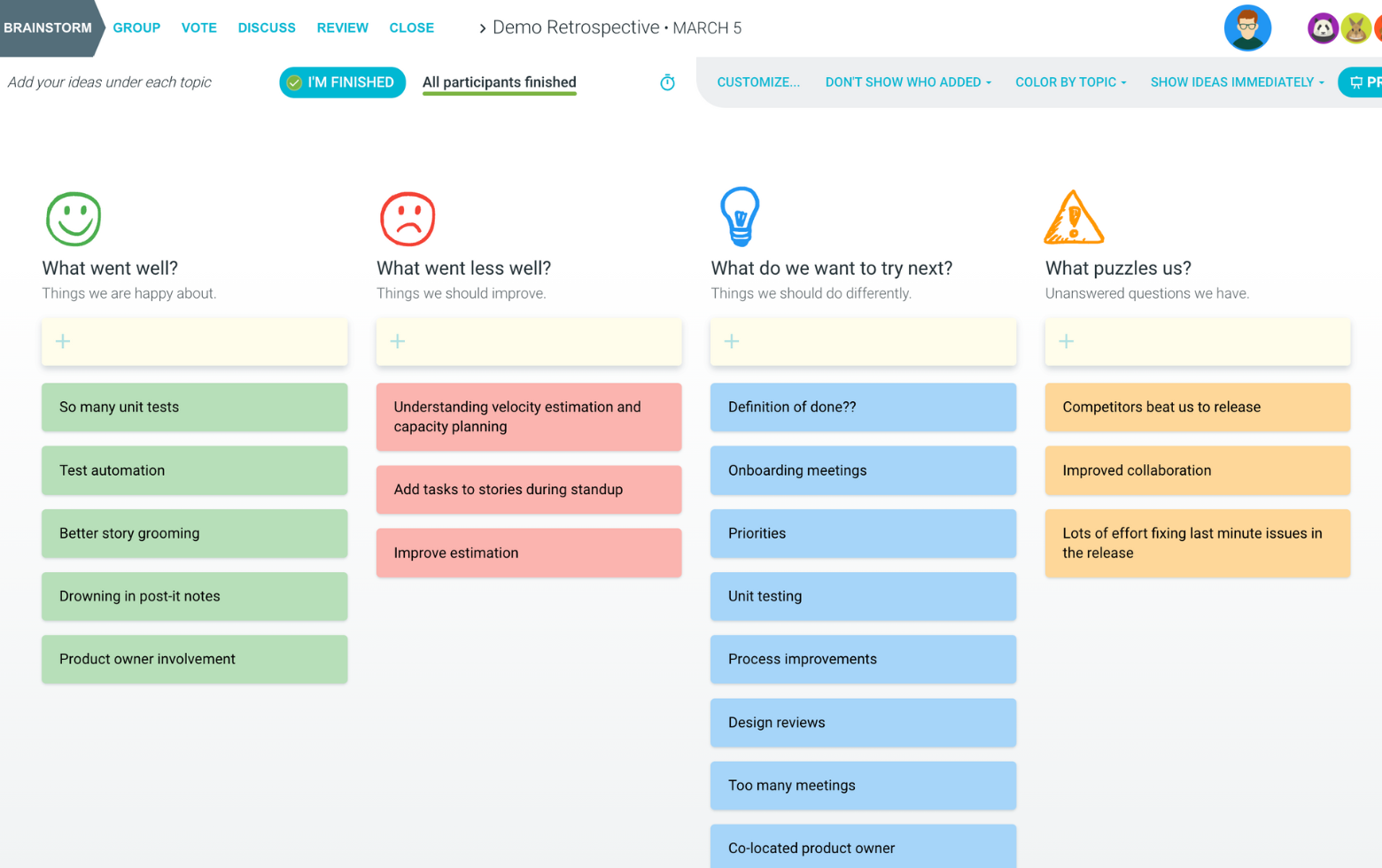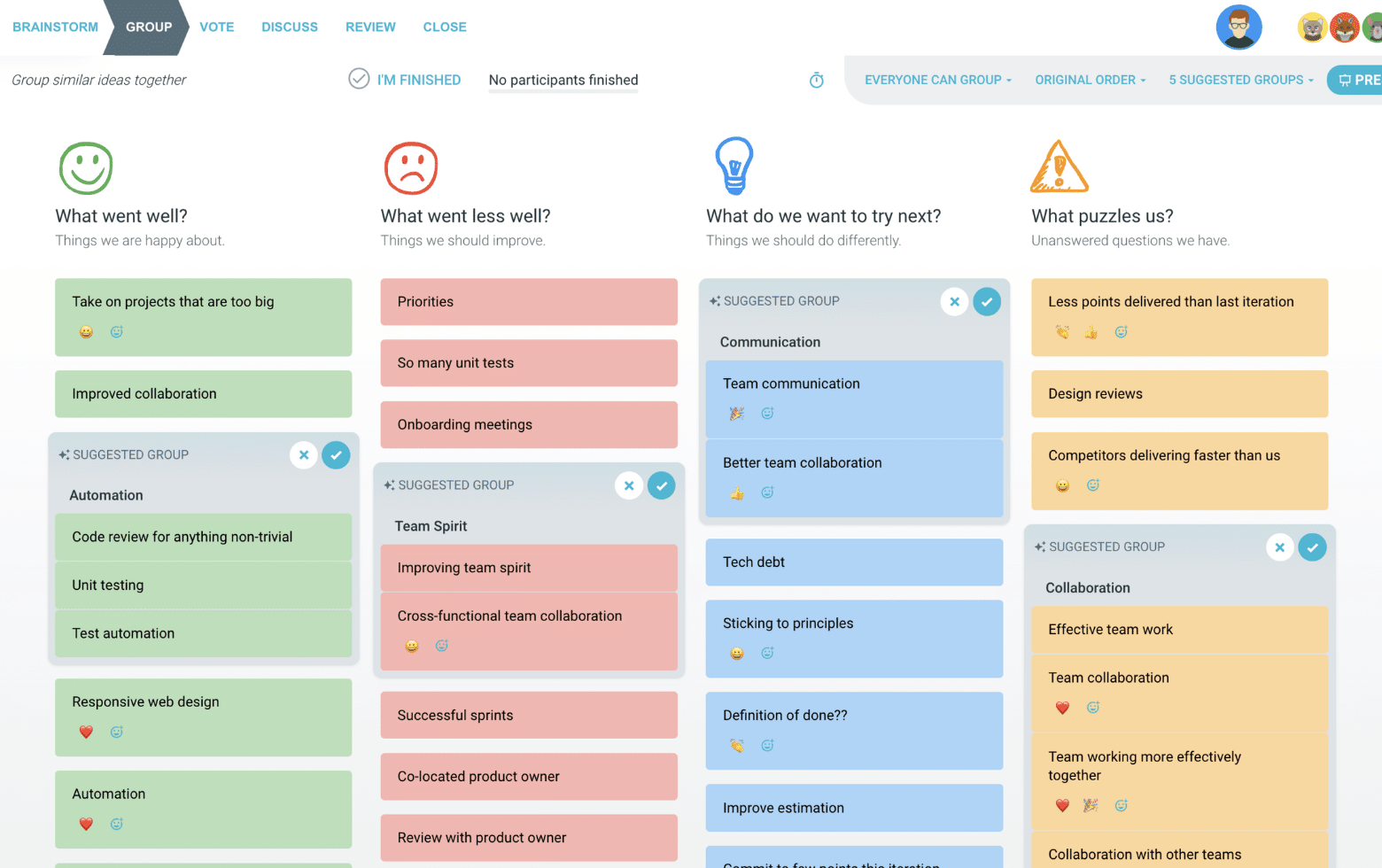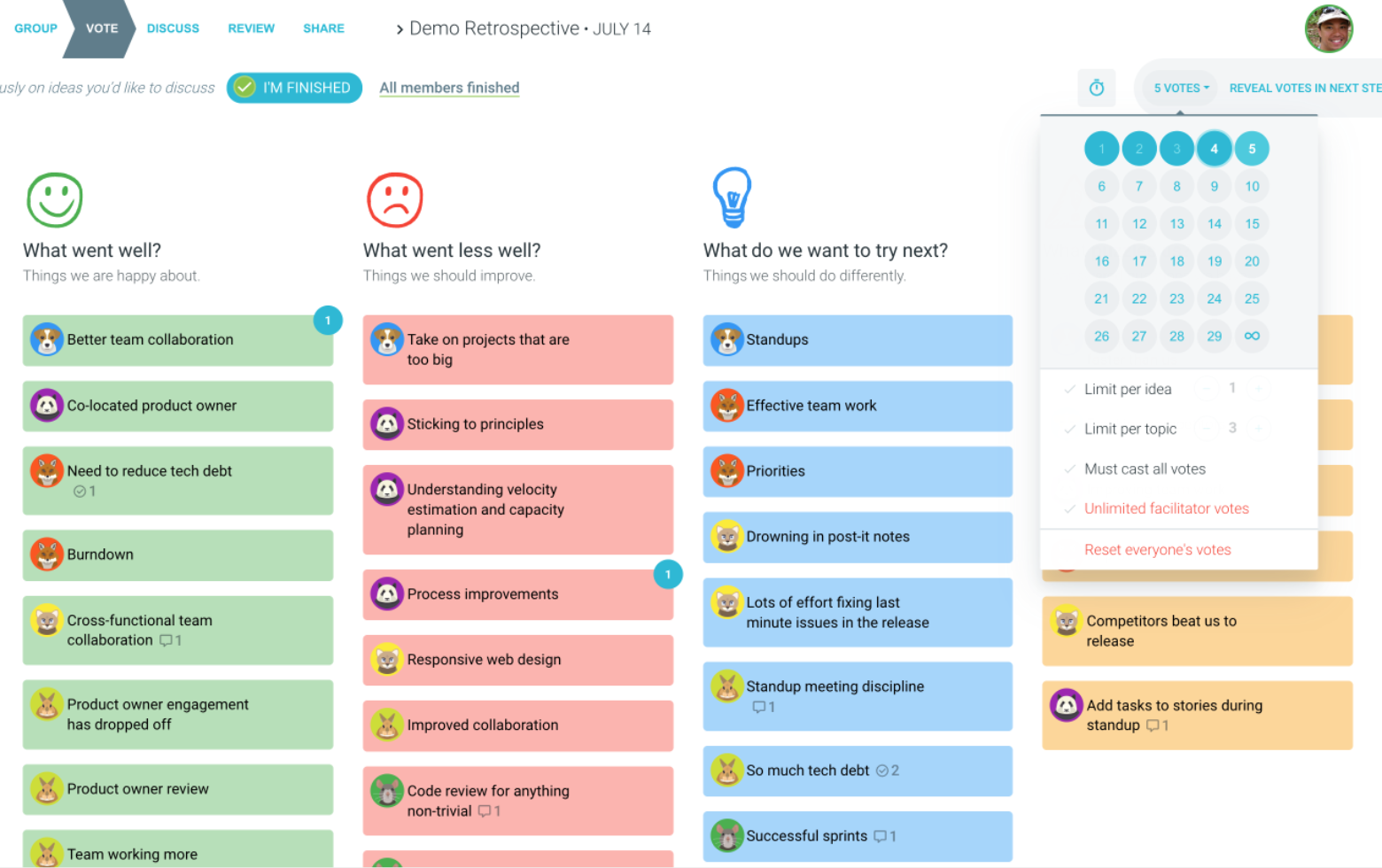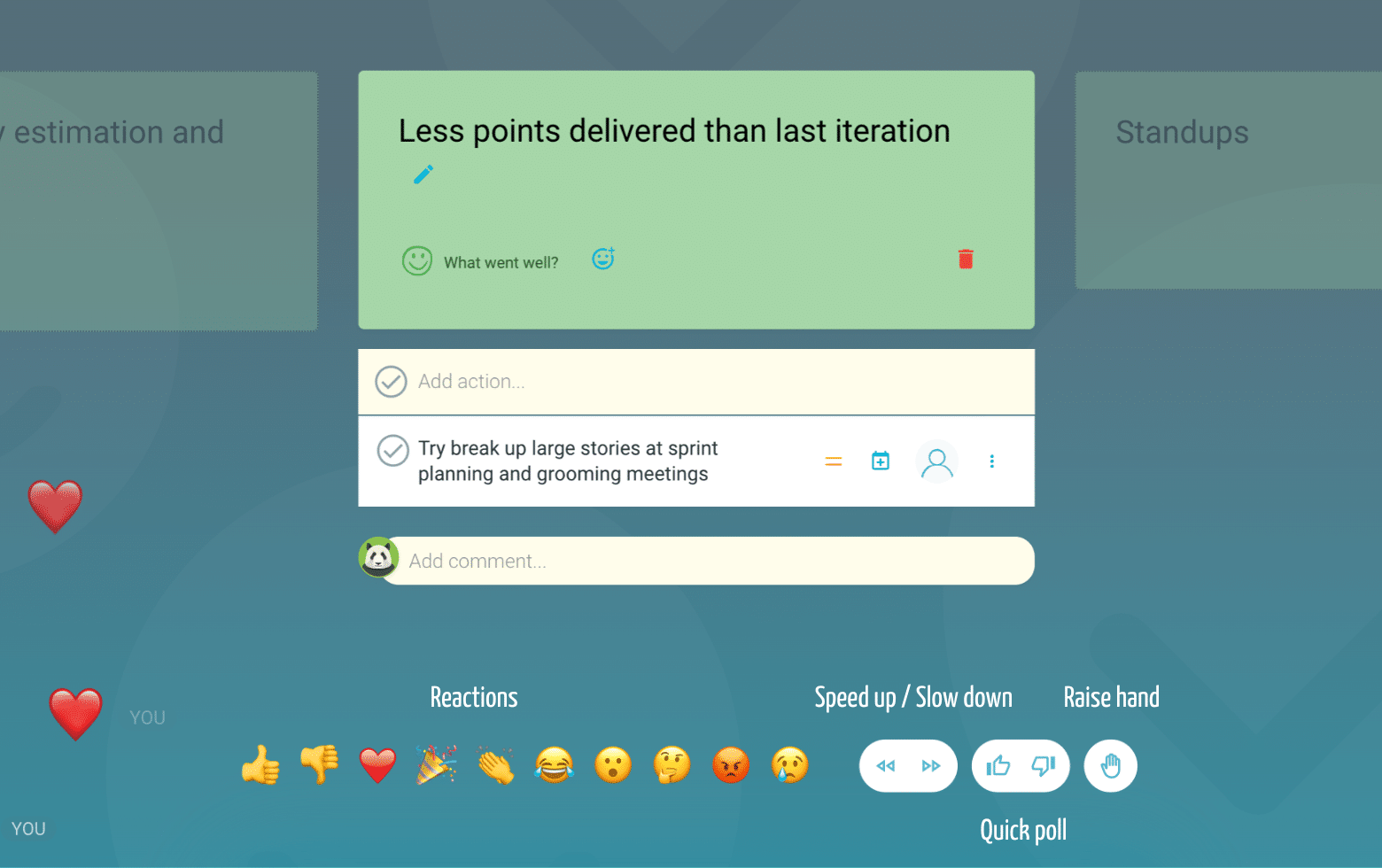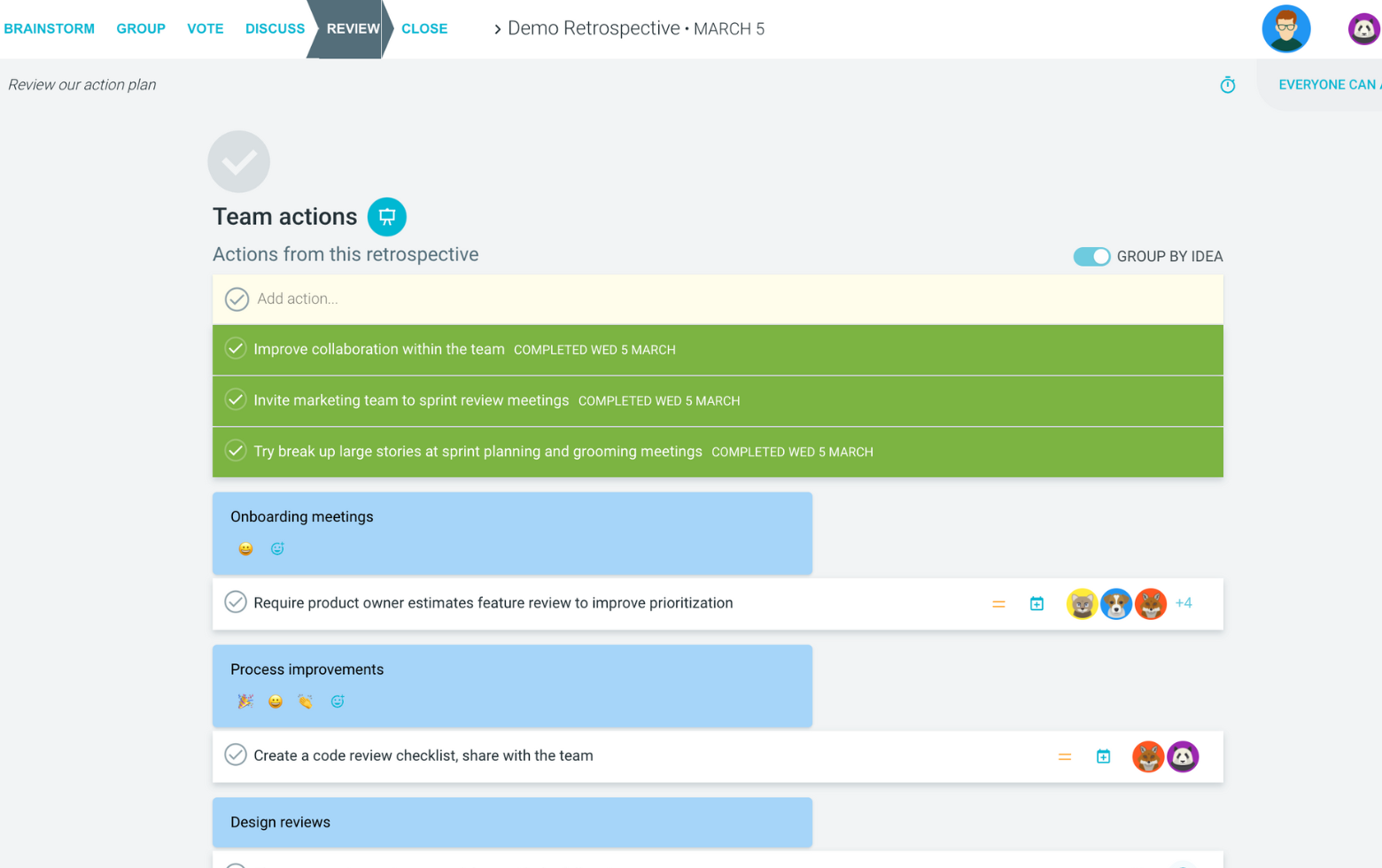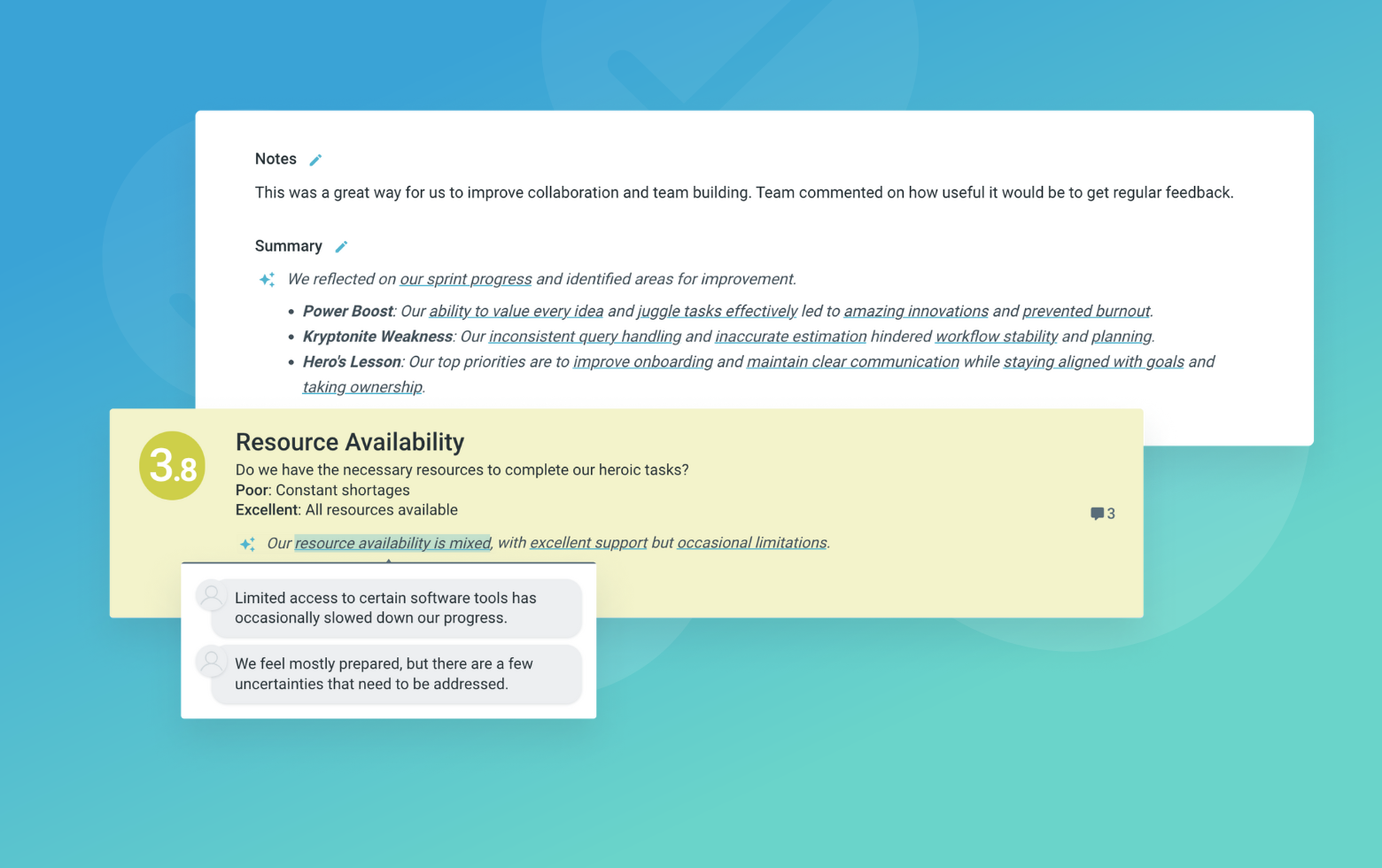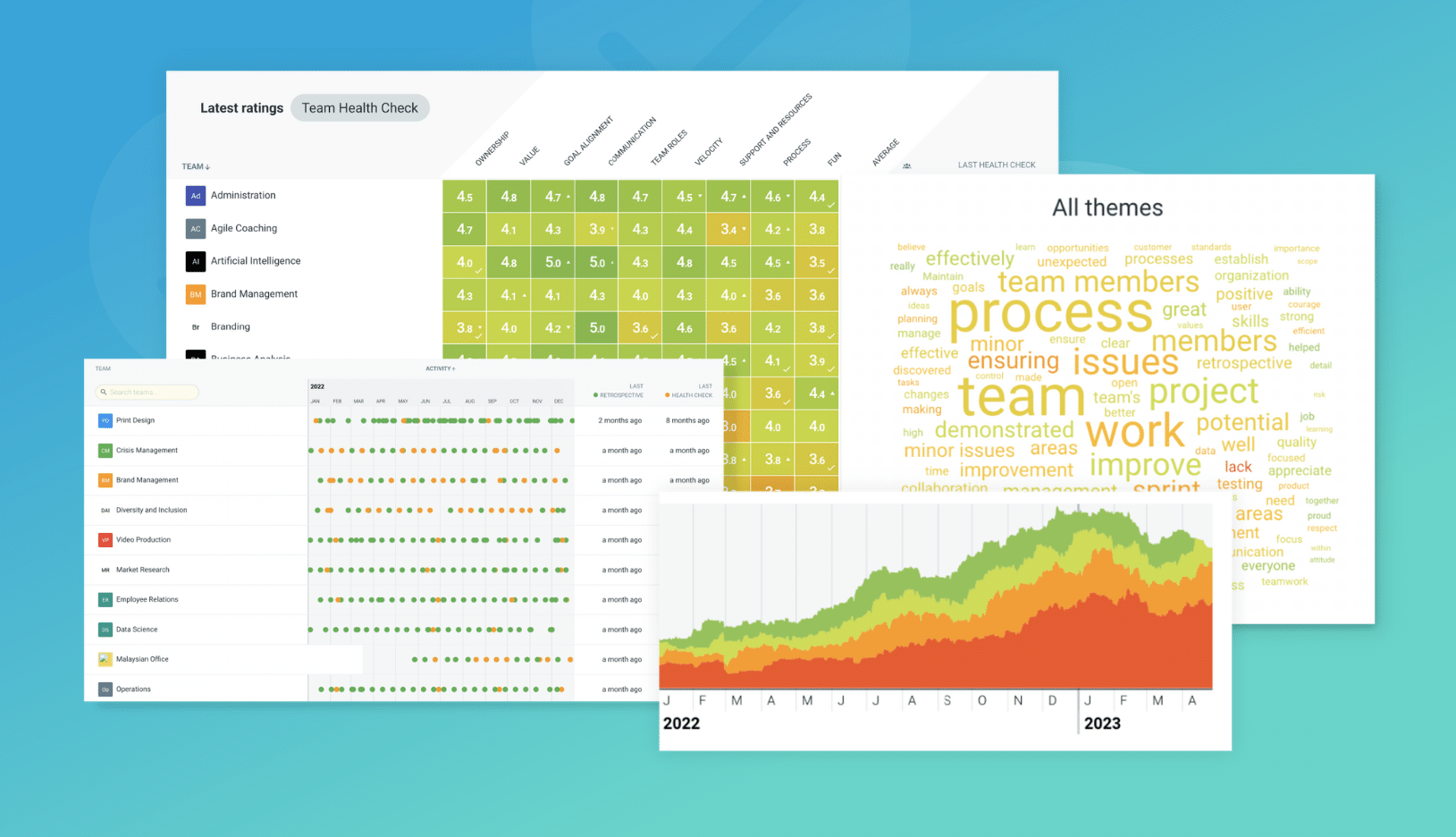What is the Aussie Rules (AFL) retrospective?
Our Aussie Rules retro is an interactive sprint retrospective idea inspired by the Australian Football League’s (March to September) season.
Based on the football played in English public schools, Australian rules football harks back to the 1850s and was developed with Australia’s unique conditions in mind. Originally only played in the state of Victoria, it quickly grew in popularity and now, the AFL Grand final is the most recognised annual sporting event in Australia.
The Aussie Rules retrospective is a great example of a fun sprint retrospective for distributed teams as it shows how templates can be used to acknowledge the interests of your team without sacrificing productivity, focus or purpose.
The Aussie Rules retrospective draws upon key elements of the event to shape a lens through which your team can view their last sprint.
The Aussie Rules retrospective format
Premiership Cup
This is the product or outcome your team is striving to deliver; having a clear and shared view of the final prize helps keen the team motivated and focussed.
Goals
These are the achievements, key outcomes and “winning” moments that happened during the last sprint, and could be the result of individual effort or that of the team. Perhaps a key target or goal was reached, a surprise victory delivered, or just a moment that deserves a high five.
Tackles
These are the obstacles, roadblocks or matters out of the team’s control that have hindered the delivery of value. While these may not be the most positive aspects of the sprint to explore, discussing them helps to identify support, share learnings and shape suggestions that will support the team in the future.
Brownlow Nomination
These are the team members who stand out when a difficult or strenuous task needs to be completed. They may have delivered long-term effort that made the last sprint much easier for the team, or they may be a great ‘team player’. Who has been performing well throughout your workplace’s “season”?
This style of retrospective can be used when your team is having trouble completing a task. Having the ability to see what has been slowing you down and what you have achieved despite this, can be helpful in providing confidence when trying to complete a difficult task.
Suggested icebreaker questions for the Aussie Rules retrospective
- Which code do you consider to be the ultimate version of ‘football’?
- If your team was losing at half time, what would you say to inspire them to victory?
- If your team lost the Grand Final, how would you console your teammates?
Retro Rehearsal
Invite your team to rehearse the retro referencing a good news story.
For example, when they consider this article, what’s the Premiership Cup/Goals/Tackles/Who would they nominate for the Brownlow?
Ideas and tips for your Aussie Rules retrospective
- Ask each person in the team to think of a team sporting event in which they have competed and or have watched, and what aspects they enjoyed the most.
- Use the concepts of brain writing – give people “silent time” to write, read and respond to each topic. You can even open up your retrospective before your meeting to allow people to add ideas and concepts prior to the meeting.
- Try to encourage ideas in each section. Even if your team hasn’t achieved anything, having an idea regarding what needs to be achieved to complete the overall goal will undoubtedly be useful.
- If you have some award medals of your own, you could have teams nominate members for the most resilient, most valuable, most important or most improved player of the team.
- A thank you can go a long way in this retrospective format. It can take courage to put new ideas forward or challenge the status quo, so make sure to acknowledge everyone’s ideas and contributions.
How to run an Aussie Rules retrospective in TeamRetro
Start Your Session in a Click
Log into TeamRetro and choose your template. Customise questions and the workflow to create your perfect retro for your team.
Create Your Team Easily – No Separate Accounts Needed
Brainstorm Individually – Free From Bias
Smart Grouping for Faster Insights
Fair, Flexible, and Fast Voting
Engage, React, and Capture Key Insights
Walk your team through ideas one by one with Presentation Mode. Stay in sync, spark real-time discussions, and capture feedback with comments, live reactions, and polls—all in one place.
Turn Ideas Into Action
Propose next steps with team buy-in, get AI-powered action suggestions, and keep everything in one place. Committed actions sync to your personal dashboard and integrate with your workflow tools—keeping you on track.
Save, Share, and Stay on Track
Get quick AI-powered summaries, add facilitator notes, and store retrospectives in your library for easy access. Schedule your next session and track published actions to keep your team accountable at the next retro.
Turn Team Data into Actionable Insights
Uncover trends, common themes, and key engagement metrics at a glance. Track sentiment shifts, analyze conversations, and monitor completed actions to drive continuous improvement.
